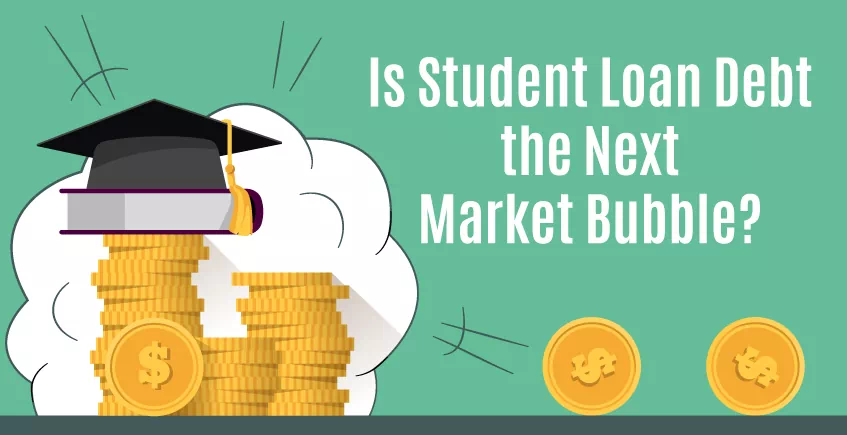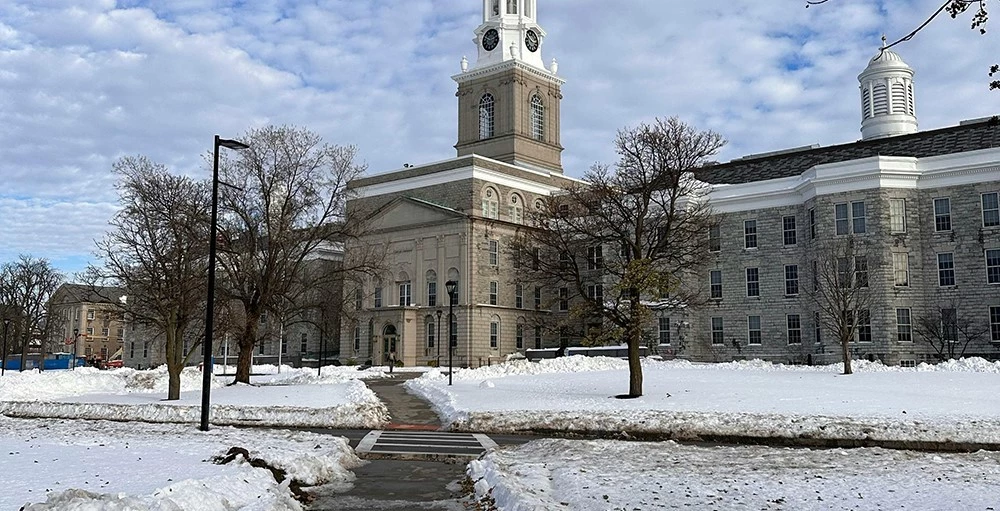Over the last decade, student loan debt has amassed to what some deem an oppressive level. Nearly 43 million borrowers owe over $1.3 trillion, representing a tenfold increase since 2010. The average borrower owes just over $37,000, and of the 70% of graduating students with a debt burden, more than half are unsure how they will afford to repay it over time. Although the federal government has offered some solace to borrowers by way of income-based repayment plans and more stringent requirements for colleges and universities to educate students about their obligation to repay borrowed funds, the default level has risen to a point where one in every six borrowers has not made a payment in at least one year. Many believe the degree to which student loan borrowers are behind on repayment eerily resembles the mortgage and housing market crisis that began in 2007, meaning student debt could represent the next big financial bubble.
The Factors at Play
Several factors have influenced the rapidly growing student loan balance among American graduates, not the least of which is the rising cost of attending a four-year college or university. While it is expected that inflation rates impact the cost of all goods and services, tuition rates have seen an unprecedented 63% increase since 2006, compared to the cumulative 21% rise for all other items. Even more concerning is the skyrocketing expense associated with college textbooks (up 88%) and housing (up 51%). Part of the issue relates back to decreased public funding for higher education institutions, causing colleges and universities to increase tuition and other fees to compensate. That rise in cost is passed on to students – and their families – and the only way to afford it is to borrow in the form of public and private student loans.
Adding to the student debt crisis is the structure behind Department of Education loans. Students are not approved or declined education funding based on creditworthiness, but instead, are offered loans directly tied to the cost of their chosen college or university. In some cases, student loans are funded above and beyond the actual expenses for a semester, and the excess is placed in the hands of young borrowers who have a minimal understanding that these funds are indeed a loan. The complexity of public student loans is compounded by the fact that interest rates applied to borrowed funds have remained the same for years, despite a near-zero interest rate environment.
Another issue plaguing the student loan landscape is the inability of new graduates to earn an income that provides enough to not only repay the debt used to fund their education but to also contribute to the economy in a meaningful way. Although having a degree is a necessity for most entry-level positions spanning employers throughout the country, income levels for recent graduates have been depressed for some time. According to Consumer Reports, the average hourly wage for individuals between the ages of 21 and 24 was $29.79 in 2000; currently, that average wage has risen only slightly to $31.40, meaning little positive change has taken place over the last ten years. Without access to higher paying jobs, graduates have no choice but to use a large portion of their income to pay back student debt – and little else.
The combination of these factors has led to widespread concern that student debt is following the same track as the housing market fallout, but some clear differences are in play. First, student debt represents a far smaller portion of the economic environment than housing debt, so any bubble that could eventually burst would have a smaller impact on the economy overall. Additionally, real estate was the only asset most consumers held during the 2008 crisis, making the outcome of a housing market crash far more extreme than one might be with student debt. However, the similarities between the two are striking.
As student loan default rates continue to climb due to stagnant income, comparatively higher interest rates, and a lack of education surrounding how student loan funding and subsequent repayment work, many fear that a detrimental outcome is on the horizon for borrowers. Because student loan debt is not eligible for discharge under current U.S. bankruptcy law, those with loans are effectively stuck with the debt no matter their financial circumstances or their means to repay. If no changes are made to the affordability of higher education or the terms inherent to student loan debts, borrowers are facing a future where they are unable to add to their financial lives by way of purchasing a home, starting a business, or funding their retirement. Consumers without student loans will feel the impact of reduced spending by younger generations, most likely in the realm of higher costs for goods and services, increased interest rates charged by lenders, and stagnant economic growth over time.
Solutions to the Student Loan Crisis
The impact of student loan debt on the broader economy is complex, but some progress is being made in addressing the challenges faced by today’s graduating students. Initiatives have sprung up over the last five years with a clear focus on educating student borrowers and their families on how borrowing to fund education affects their bigger financial picture. Handfuls of colleges and universities have started to implement financial literacy programs campus- and community-wide, with the mission of improving the level of understanding individuals have about their responsibilities and opportunities in money management. Included in most of these programs are real-life lessons regarding how student loan debt works, options for funding higher education through various sources, and the options available to borrowers when repayment begins. Colleges and universities are starting to do their part on the financial education front, but there is more work that can and should be done.
The federal government in partnership with state government agencies will need to do a deep dive into the affordability of higher education if a stop to the growing student debt crisis is the ultimate goal. Not only will this require some degree of tuition limits, but it will also necessitate a review of the pricing of student loans across the board. Additionally, students need to feel as though an earned degree is worth its growing cost – by far the most challenging task in the student debt conundrum. An increase in the number of available higher-paying jobs, realistically affordable repayment programs for student debt, and incentives to repay that debt may provide a path to reducing the effects of a burst student debt bubble in the future. For now, students, their families, and the institutions who commit to providing a valuable educational experience must focus on the task of understanding how student debt plays a larger role in their financial lives, far beyond the promise of a degree.








